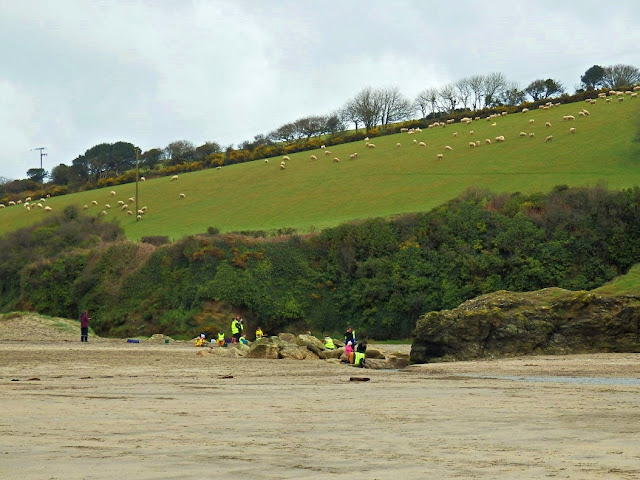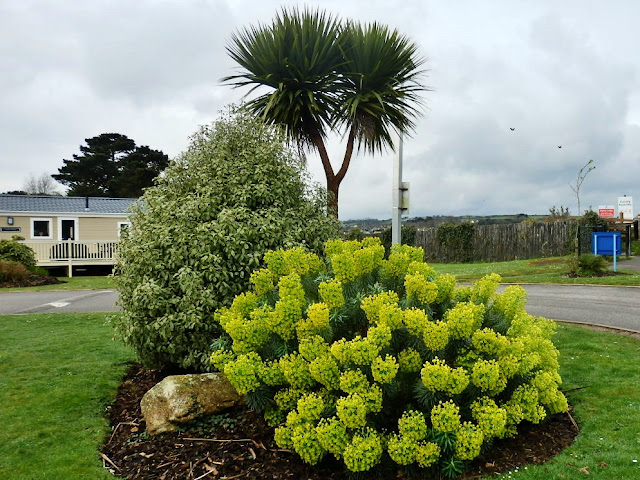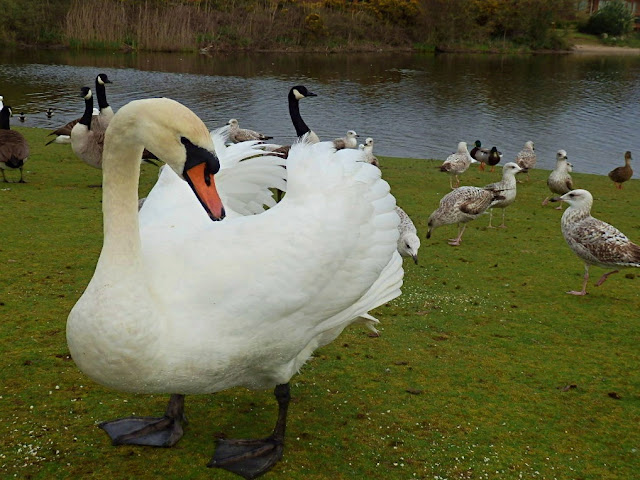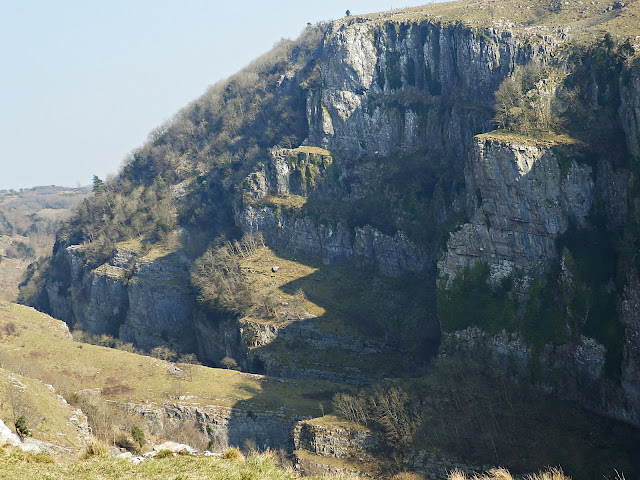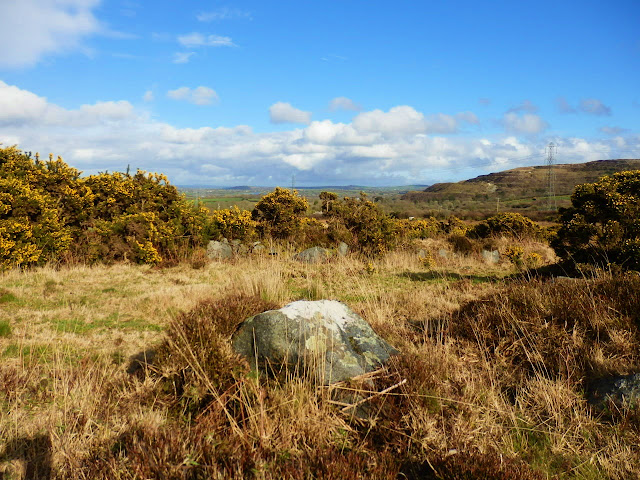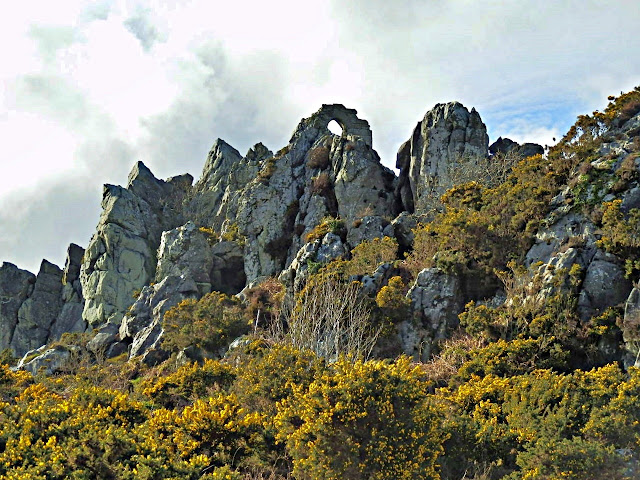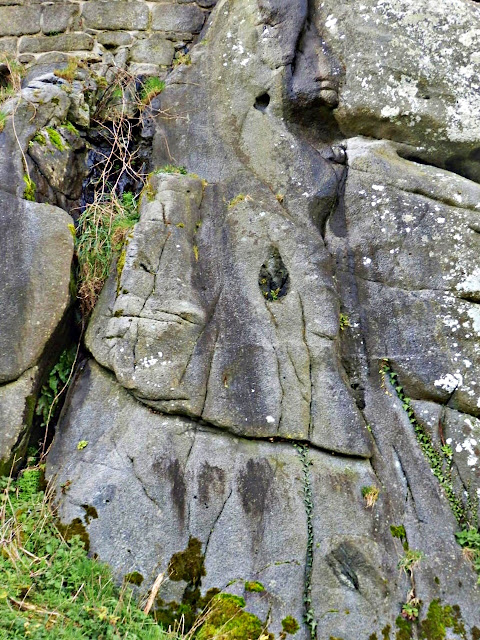Wednesday, 25 March 2020
Walking Along the Beach at Carlyon Bay, Cornwall
Fresh air at Carlyon Bay for today's effort to stave off the coronavirus.
It's a long sandy beach - well sort of. The actual sand is quite gritty to the touch. There is a reason for this. Some of it is the remains of waste from previous tin and china clay industries.
The local dogs don't seem to mind, nor do most visitors.
At the far end of the beach are rocks and the sand was untouched. There's always something pleasing about being the first to make a footprint.
It was a bit of a chilly day and the sea was beginning to get a little rougher than usual.
Lots of shells on the rocks.
It's interesting to see the different patterns and shapes on the rocks.
The barrel below was washed ashore. I recently found a similar one on a different beach. They both appeared empty and must have been in the sea for quite a period judging by the seaweed and other attachments.
We started to make our way back to our car ...
… walking past Crinnis Rock.
On the way back I found this bundle made up of shells, bits and pieces and plastic. Plastic sadly seems to get everywhere.
Looking forward to lunch!
Sunday, 22 March 2020
Walking the Beach and Lake at Par Sands, Cornwall
The Coronavirus seems to be controlling our lives at the moment, so we thought we would visit various different beaches to get some healthy sea air in our lungs. There's plenty of room so we won't invade anyone else's space.
The photos today are from a walk along Par beach. The tide was out so there was an expanse of damp sand.
Unexpectedly there was a gathering of mothers, or perhaps a nursery group (above) with some children tucked away in a cove.
There aren't many shells on the beach at Par, but I always seem compelled to examine any I do see.
We walked the full length of the beach and looking back noticed several people also walking - but mostly with their dogs.
We continued past the china clay works ...
… and onto the Par Sands Caravan Park. There was no one else about. Years ago we owned a couple of caravans here that we rented out to holiday makers - was a fun time.
The caravan park is now much altered and improved ...
… but there is still a china clay private road to cross if walking to Par itself.
After walking through the caravan park we reached the small lake.
Quite a few swans and ducks in residence and also noisy geese aided by seagulls. They all get very excited if someone wants to feed them.
It's quite a pleasant lake and in the summer months is a magnet for children, though paddling or swimming aren't allowed.
A couple more photos of the lake, watch out for the deep water!
I noticed a couple feeding the ducks almost hidden away under a tree. Not completely sure why I didn't post this photo in colour but, somehow, it seemed an old fashioned moment. I can remember in my childhood feeding the ducks with my parents, such excitement. It would be so nice to be able to do that once more but life, sometimes sadly, moves on.
Thursday, 19 March 2020
On Tour: Visiting Cheddar Gorge
Today my post is from outside of Cornwall. The photos are all of Somerset's wonderful Cheddar Gorge, which is just outside of the village of the same name.
After driving through the Gorge - the exposed rocks are carboniferous limestone - we found somewhere to park the car.
We headed to a trail which would take us to the top part of the gorge. The photo is looking back down after being about halfway up - if that makes sense!
We reached the top but, looking at the next photo it seemed all the other walkers were on the other side of the gorge. Good to be different though.
Lovely views and no one else about ...
… other than a few goats meandering about. I understand they are encouraged as this helps to keep the scrub under control.
Cheddar is the largest gorge in the UK. It rises to 449 feet high. I guess it's okay to use 'proper' measurements now we have Brexit! Okay, that's 137m.
While walking we came across a training session for mountain rescue …
… their vehicles were parked in a field.
A bit of technical stuff: The gorge was formed by meltwater floods during the cold periglacial periods which have occurred over the last 1.2 million years.
During the ice ages permafrost blocked the caves with ice and frozen mud and made the limestone impermeable.
When this melted during the summers, water was forced to flow on the surface, and carved out the gorge.
There's one fascinating fact about one of the caves in the gorge. This is where Britain's oldest complete skeleton - known as Cheddar Man - was found in 1903.
It is estimated that the skeleton was over 9,000 years old. Wouldn't it be something to travel back in time to see how Cheddar Man lived?
There have been settlements here since Neolithic times. Quite mind boggling - it's a funny old world!
I guess you can't mention Cheddar without mentioning Cheddar cheese, which was first made in Cheddar way back in the 12th century. It's my favourite cheese - proper Cheddar that is, not some of the so called copies. Cheddar cheese traditionally had to be made within 30 miles of Wells Cathedral, but times change.
Here's another 'On Tour' post:
On Tour: Visiting Glastonbury Abbey, Glastonbury Tor and King Arthur
Monday, 16 March 2020
A Fresh Visit and Photos of the Mysterious Roche Rock and Hermitage, Cornwall
After lunch the sky looked a pleasant shade of blue for a change so I decided I'd head for Roche Rock - as above. But Cornwall being Cornwall the weather often has a mind of its own.
After parking the car, all seemed well though the ground was very sodden from days of rain.
There were pleasant views across the countryside.
As I have often mentioned I like stones and rocks. This area is a mixture of grey quartz and black tourmaline. They have been around for quite a while, as they were created some 270 million years ago which is quite mind boggling.
As for the heathland, this has probably remained the same for hundreds, maybe thousands of years.
The main attraction though is the old chapel or hermitage built high on the rocks - but first three photos leading to the chapel.
There is yellow gorse everywhere at this time of year, it even seems to grow on the rocks themselves.
The weather began to change rapidly, there was a chill in the air or maybe it was the ghost of an old miner said to frequent these parts.
In the middle of the photo below there is what looks like a hole high in the rocks. This is the Roche Rock chapel.
The chapel can now be seen much clearer in the three photos below.
It's often called a chapel but may well have been an hermitage. In 1584, for example, a John Norden wrote of a high rock on which is a cell or hermitage and stands upon the wild moors far from society.
The next photo is of the rocks leading up to the chapel. At the time I thought it looked like a rabbit or a face - but not so sure now!
I have previously published two posts on Roche Rock and the photo below was taken at that time - a day of brilliant sunshine. The links are at the end of this post and include stories and a little history of the chapel.
By the time I left on this visit it was very different as can be seen by my final photo for today. All looked quite creepy, not sure why there is a green flash in the picture - but I arrived home safely!
Previous Roche Rock Posts:
Roche Rock Stories
The Mysterious Roche Rock, Cornwall
Subscribe to:
Comments (Atom)
FEATURED POST
Cornwall's Lizard Peninsula
I know my wife and I and live in Cornwall but we had a break away from home on Cornwall's L izard Peninsula - one of our favourit...

















